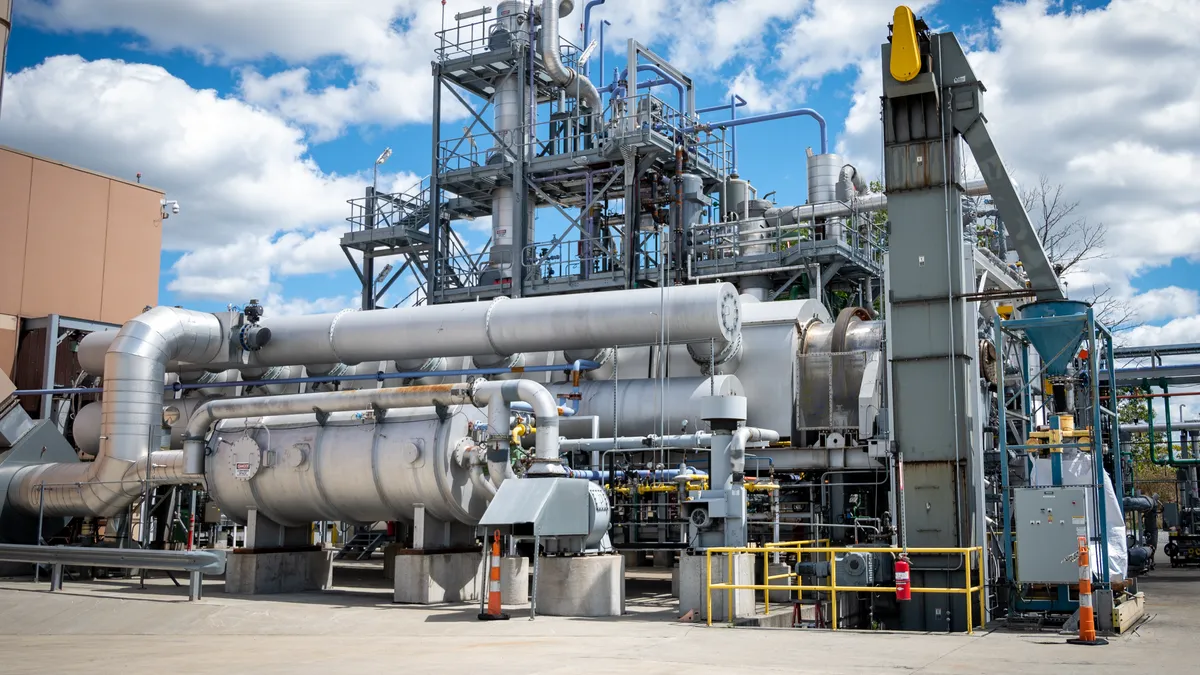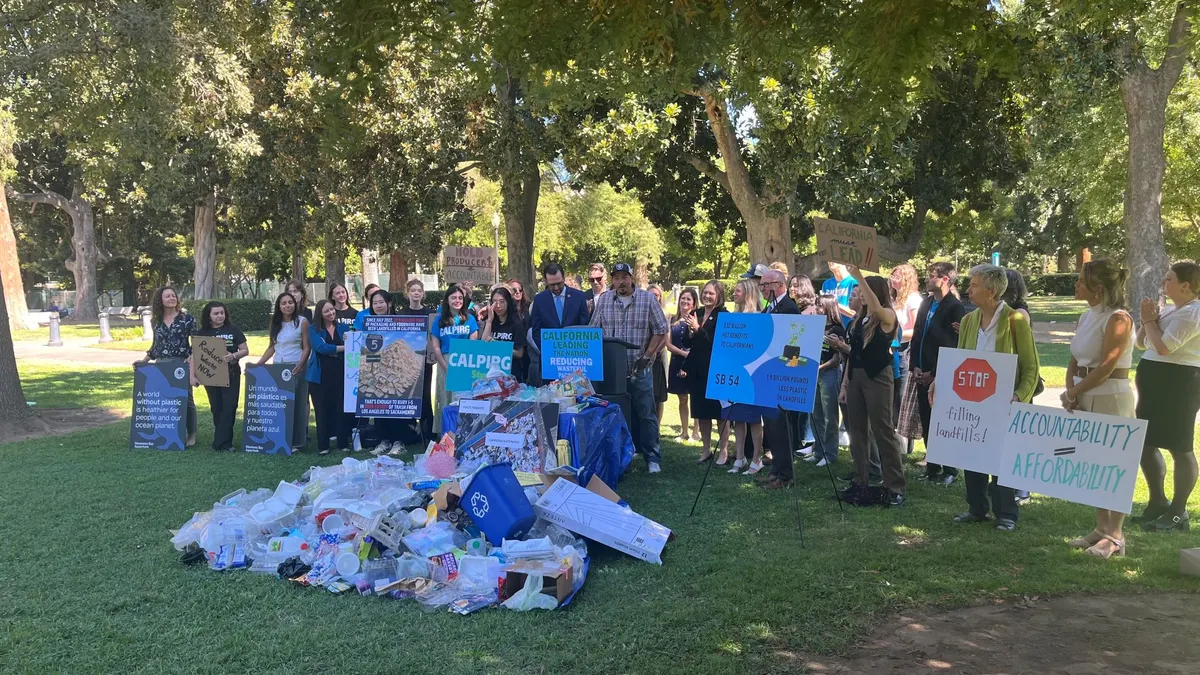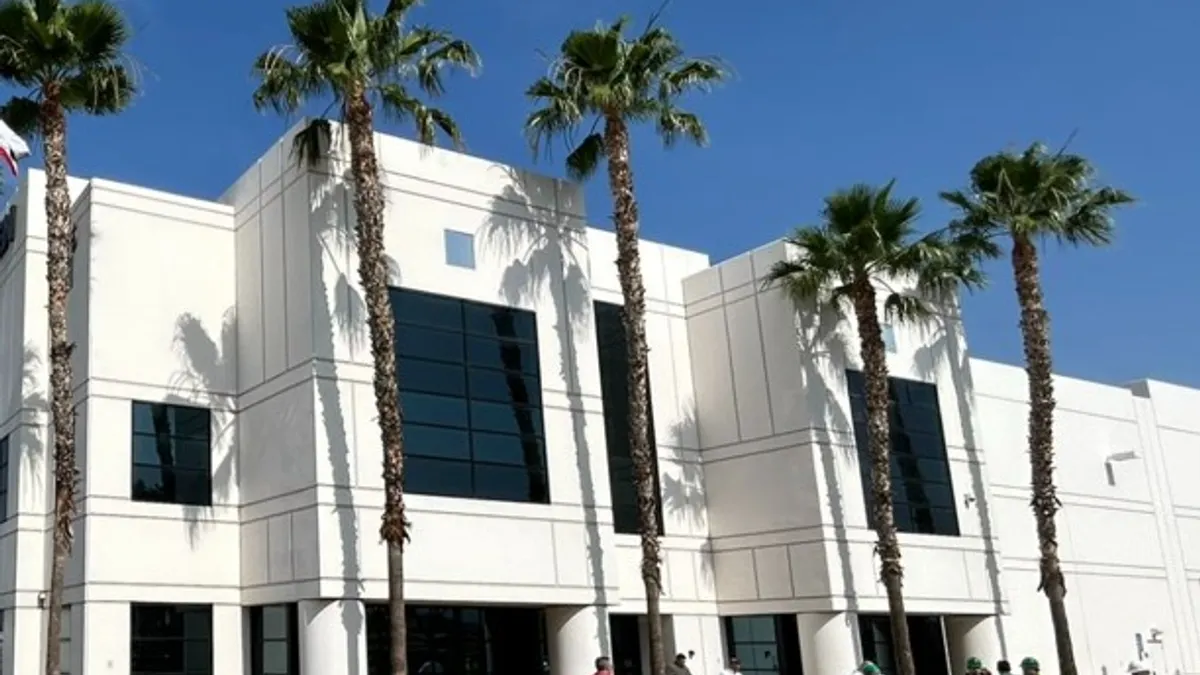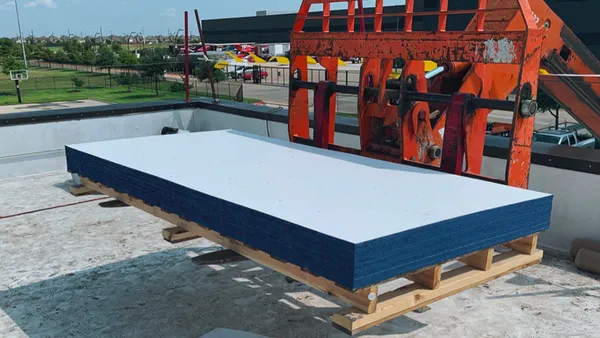China's ban on 24 types of imported scrap materials began on January 1, but its more rigorous 0.5% contamination standard — up from 1.5% — for plastics and fiber went into effect on March 1. About a month in, some effects are evident for U.S. recyclers.
"In practical terms, it's probably not that different. [The standard] was hard to meet before, so it's become nearly impossible at this point," said Nina Bellucci Butler, CEO of consulting firm More Recycling.
Because of China's voracious appetite for all types of U.S. scrap exports over the past 20 years, MRFs "had the luxury of being able to sell the mixed rigid plastics [and] mixed paper without a lot of sorting and quality control," Butler said. That allowed them to run at a high capacity and push through large volumes of material.
But the stricter contamination standard has MRFs slowing down their lines to improve quality. "In some cases, we run our lines slower. In some cases, we use technology in the equipment so it can process it in a cleaner fashion," Brent Bell, vice president of recycling for Waste Management, said. Both tactics generally decrease throughput volume and increase operating costs, but the exact financial impact will take more time to determine, as will any improvement to MRFs' contamination levels.
Curbside collection presents a particularly large contamination challenge for MRFs. “We have material that comes into our facilities that ranges from 15% to 25% contamination. To make a material that’s 0.5% is a difficult task,” said Bell.
Finding new markets
China's lower feedstock demand (driven by regulations making imports more difficult) is one factor contributing to fiber and plastic scrap price dips. More Recycling’s most recent annual End Market Demand for Recycled Plastic report says: "Restrictions in China on the import of scrap plastic, along with lower energy and virgin resin prices, pose challenges for plastic recycling." And since the 0.5% standard went into effect, "For materials that were dependent on the export market, yes, there's been a pretty big hit," Butler said.
Although More Recycling's report shows some plastics with higher demand, "this is all data from prior to National Sword. It's unlikely we'll see that continue to increase," Butler said.
Still, not all commodities have taken a downturn. "Some materials are up in price … PET is actually increasing. It's a supply and demand thing," Butler said. "For the most part, if you can separate that material, there are domestic markets for that right now." Pratt Recycling President Myles Cohen seconded that notion at a recent regional conference, saying markets for some material, including PET, are "relatively healthy."
MRF operators who previously hadn't done so are seeking domestic mills, as well as new foreign markets. Vietnam, Thailand and South Korea are popular targets, although those countries don't have nearly enough capacity to absorb the same volume of global scrap as China.
Waste Management also has diverted material to another popular alternative market — India. "We started in India two or three years ago and ramped up the materials that flow [there]. Domestically, the plastic shifted over a few years ago, but the fiber has shifted over recently" to domestic mills such as Pratt Industries, Bell said. "We think Pratt will add more capacity in the next few years to help with the China situation."
Other reclaimers also point to Pratt as a leading U.S.-based mill accepting mixed paper scrap, although the company's primary mill locations in the Eastern half of the country make it a less viable option for West Coast MRFs, which are experiencing particularly profound difficulties from the China restrictions.
On the plastic side, MRFs report successful domestic relationships with KW Plastics. The company installed a wash line for #4 and #5 tubs and lids in 2013, with a capacity of 12 million lbs. per month. KW Plastics Recycling Division General Manager Scott Saunders said the line is currently running at 50% utilization while the market evolves toward segregated bales. He said prior to China's new contamination standard and material bans, "China would accept scrap knowing it was 40-50% trash, [which] slowed down the transition from commingled bales to segregated bales."
The company currently has equipment in place "to handle an additional 60 million pounds per year of tubs and lids and have markets for the resin made from that material," Saunders said. "If the market outgrows our current capacity, KW can have an additional 12 million-pound-per-month line installed within six to seven months."
Investing in infrastructure
One issue with domestic mills is many don't have adequate infrastructure to process heavily contaminated material, and many MRFs don't have adequate infrastructure for better sortation.
China's previous willingness to accept a wide array of materials caused domestic recycling infrastructure investments to lag. In addition, domestic investments tend to rise when scrap values are high and drop when scrap values are lower, as they have been in the past few years.
"We're in this perfect squeeze of not having an outlet through the export market, and not having the value to warrant the investment," Butler said. "Further separation is required to get material to its discrete resin or quality levels to go to end markets."
Reclaimers recognize that customers generally are willing to pay higher prices for higher quality, better segregated materials. "Even though China put out this contamination level, really all of our customers have been asking for better quality," Bell said.
"I do think there's a real opportunity for the industry to support this idea. It’s just a matter of how," said Dylan de Thomas, vice president of industry collaboration at The Recycling Partnership.
Plastics facilities are "a lot simpler to invest in" than paper facilities, which present a "much larger and longer-term investment, so it needs to move a lot slower," de Thomas said. "There is no real short-term response [to China's changes] occurring, other than the paper industry looking for other overseas markets.”
Residential contamination challenges
MRFs' scrap contamination woes are trickling down the chain to consumers. "I'm concerned about communities dropping recycling programs right now, and dropping materials from programs," Butler said.
Throughout the United States, most notably in the West, communities face service disruptions as MRFs grapple with how to handle reclaimed materials, some of which are being stockpiled in the hope of an industry turnaround. Programs in Washington are among those eliminating materials — especially #3-7 plastics and fiber — from the recycling stream, and in most cases, sending them to landfill.
"Idaho recently removed some materials from the curb ... and the same thing happened in some regions in southern Oregon," de Thomas said.
However, many locations have adopted a "wait and see" attitude to determine how the contamination changes play out, because "most communities acknowledge that once you turn a spigot off, it's very hard to turn it back on again," de Thomas said.
Massachusetts and Texas reclaimers join those that have requested or are considering re-negotiated, higher-priced collection contracts or extra fees to cover higher operating expenses and lower scrap prices. "MRFs everywhere are looking to temporarily re-figure their contracts so they can be supported during this market downturn," de Thomas said. In Massachusetts, some operators have received disposal waivers to send recyclable material to landfill.
Customer confusion, especially at the residential level, has led some businesses like Waste Management to launch educational campaigns to encourage customers to reduce their own contamination. They educate customers about what should stay out of bins, from blatantly inappropriate items like bowling balls, to borderline items like grease-contaminated pizza boxes, to items like film that are recycled in specialty operations but gum up the average sortation line.
"It really starts with the generating customer, whether that's curbside or a commercial customer ... We've done a lot of investments in new technology and developing alternative markets, but we really do need the public's help," Bell said. "If we can get the [initial] contamination levels down, then making the 0.5% will still be a challenge, but it won’t be an impossible challenge."


















